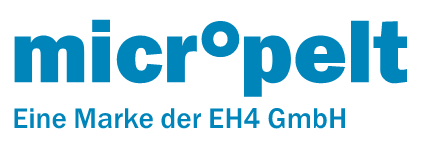Copyright Micropelt
Notes on radio operation MVA EnOcean
Transmission range
The radio transmission range is limited by both the distance between transmitter and receiver, and by interference. Indoors, building materials play an important role. Major reflections and signal losses are due to metallic parts, such as reinforcements in walls and metallized foils, which are used on thermal insulation products.
Penetration of radio signals:
Material → Penetration
Wood, gypsum, uncoated glass → 90..100 %
Brick, chipboard → 65.. 95 %
Reinforced concrete → 10.. 90 %
Metal, aluminum facings → 0.. 10 %
For an evaluation of the environment, please see guide values listed below:
Conditions → Range / penetration
Line-of-sight → Typ 30 m range in passages, up to 100 m in halls
Plasterboard and wood walls → Typ 30 m range through max. 5 walls
Brick and foamed concrete walls → Typ 20 m range through max. 3 walls
Reinforced concrete walls & ceilings → Typ 10 m range through max. 1 ceiling
Supply blocks and lift shafts should be treated as shields.
In addition, the angle at which the signal enters the wall has to be considered. A shallow angle increases the effective wall strength as well as the attenuation of the signal. Whenever possible, signals should enter walls perpendicularly. Alcoves should be circumvented.
For additional information, refer to the EnOcean White Paper “EnOcean Wireless Systems – Range Planning Guide”.
Other interference sources
Common sources of interference are devices that generate high-frequency signals. These are typically computers, audio-/video systems, electronic transformers and ballasts. The distance of the actuator to such devices should be more than 0.5 m.
Loss of communication with the room controller
If the actuator cannot establish a dependable radio communication with the room controller, i.e. more than 6 times in sequence the room controller does not receive a radio signal, then the actuator switches to a reduced radio pattern. The typical 10 minute radio period is extended to one transmission every hour, reducing the energy consumption while radio contact is interrupted. In addition, the actuator enters the safe position. Once the radio contact to the room controller recovers, the actuator reverts to requesting instructions from the controller every 10 minutes.
